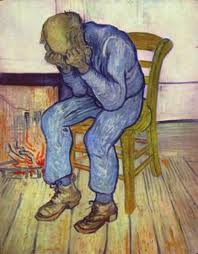Depression & Bipolar Disorder « Mental Health

Articles, Organizations & Resources
re: Depression and Bipolar Disorder
Articles & Publications:
- Bipolar Disorder (HelpGuide.org)
Bipolar disorder (also known as manic depression) causes serious shifts in mood, energy, thinking, and behavior–from the highs of mania on one extreme, to the lows of depression on the other. More than just a fleeting good or bad mood, the cycles of bipolar disorder last for days, weeks, or months. And unlike ordinary mood swings, the mood changes of bipolar disorder are so intense that they interfere with your ability to function.
- Bipolar Disorder and Creativity (Psychology Today – 3/19/12)
In 1989 the psychiatrist Kay Redfield Jamison (who herself suffers from bipolar disorder) surveyed 47 British authors and visual artists from the British Royal Academy and found that 38 per cent had been treated for a mood disorder.
- Depression – Overview (Medline Plus)
Depression may be described as feeling sad, blue, unhappy, miserable, or down in the dumps. Most of us feel this way at one time or another for short periods. Clinical depression is a mood disorder in which feelings of sadness, loss, anger, or frustration interfere with everyday life for a longer period of time.
- Depression is Linked to Hyperconnectivity of Brain Regions, a New Study Shows (The Daily Beast – 2/21/12)
A study published today provides surprising new insight into what happens in depressed brains. In people with depression, brain regions appear to be overly connected to one another, says the study, which is being published by UCLA’s Semel Institute for Neuroscience and Human Behavior. In turn, this excessive connectivity reduces the flexibility the brain needs to function properly. “Depression is a whole brain disease,” says Dr. Andrew Leuchter, the Semel Institute neuroscientist who led the team that produced the study. “It’s not something that affects just one brain region, but that the entire organ doesn’t appear to be functioning very well.”
- Lab Test for Depression? (About.com)
Although there isn't currently a laboratory test that can be used to detect depression, researchers say it may eventually become a reality. In an attempt to design such a test, Dr. George Papakostas and his team gave 36 people with depression and 43 people without a blood test which looked at nine different biomarkers which have been associated with depression. These biomarkers appear to be an indicator of inflammation in the brain, according to Papakostas.
- Inner Pain (HourDetroit.com)
The death of a loved and respected Fox 2 Executive could help shed light on understanding the darkness that leads to suicide and depression.
- Patient Voices: Bipolar Disorder (NY Times)
Riding the ups and downs of bipolar disorder can cause havoc for those with the condition and their loved ones. Here are firsthand accounts of living with bipolar disorder.
Organizations & Resources:
The alliance can help you find a local support group. The website has six discussion boards, including a friends and family forum for those with loved ones suffering from mental illness.
- Depression Screening (Mental Health America)
Offers a free (and confidential) online screening test.
- Getting Help for Depression (WebMd)
When you have depression, it's more than feeling sad. Intense feelings of sadness and other symptoms, like losing interest in things you enjoy, may last for a while. Depression is a medical illness, not a sign of weakness. And it's treatable.
- Major Depression (U.S. Nat'l Library of Medicine)
Depression may be described as feeling sad, blue, unhappy, miserable, or down in the dumps. Most of us feel this way at one time or another for short periods. True clinical depression is a mood disorder in which feelings of sadness, loss, anger, or frustration interfere with everyday life for weeks or longer.
- What is Depression? (Nat'l Institute of Mental Health)
When you have depression, it interferes with daily life and causes pain for both you and those who care about you. Depression is a common but serious illness. Many people with a depressive illness never seek treatment. But the majority, even those with the most severe depression, can get better with treatment. Medications, psychotherapies, and other methods can effectively treat people with depression.
